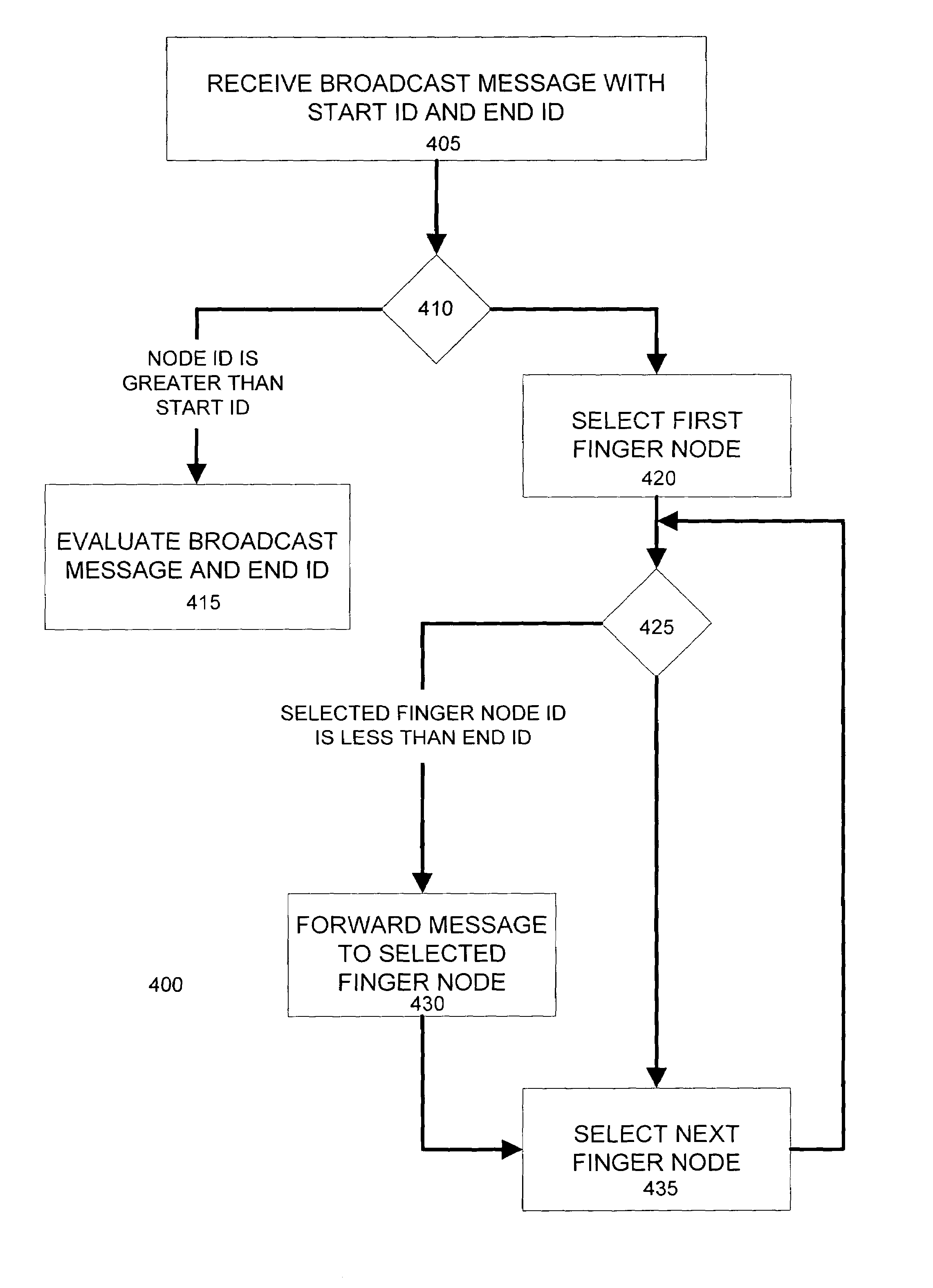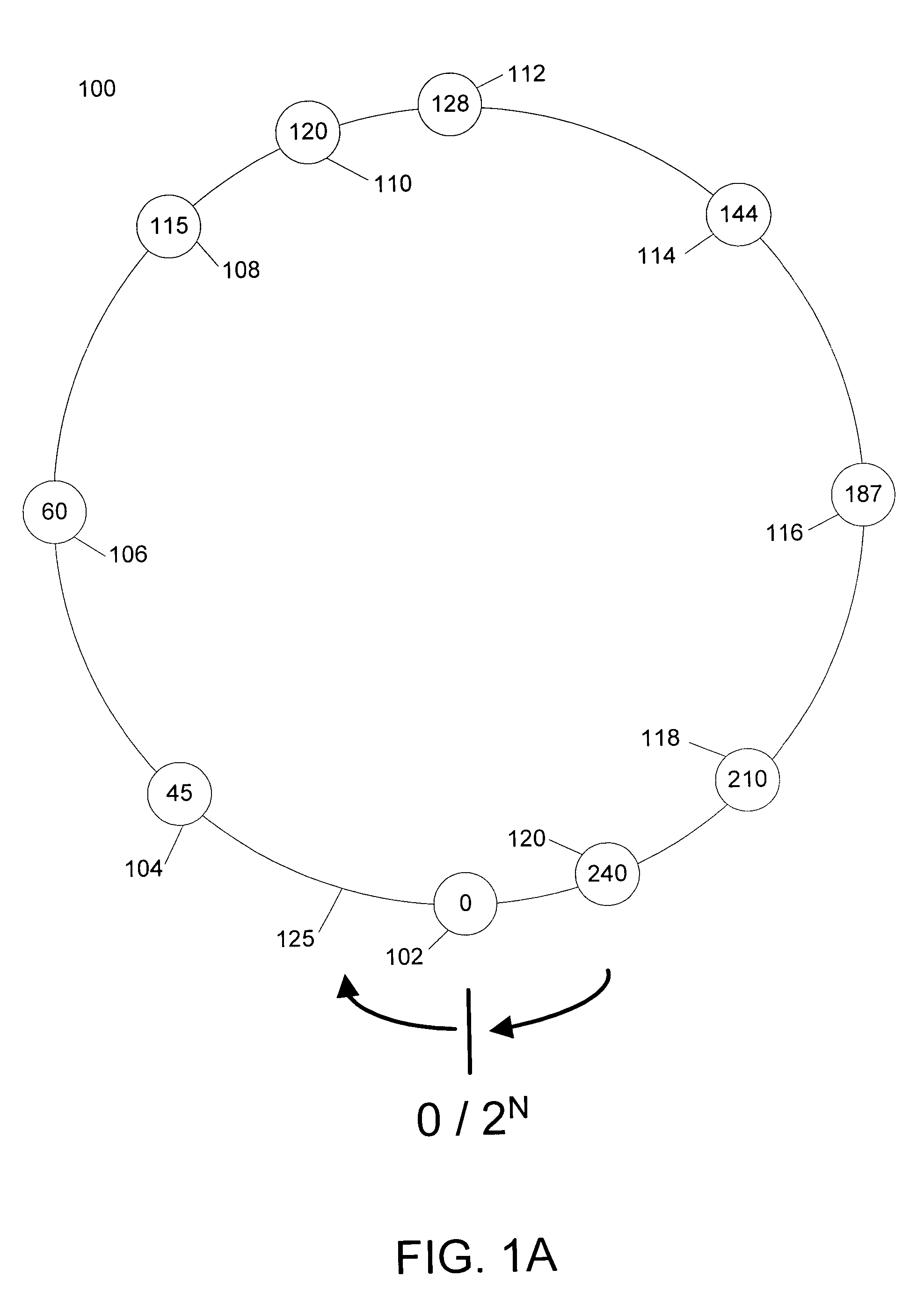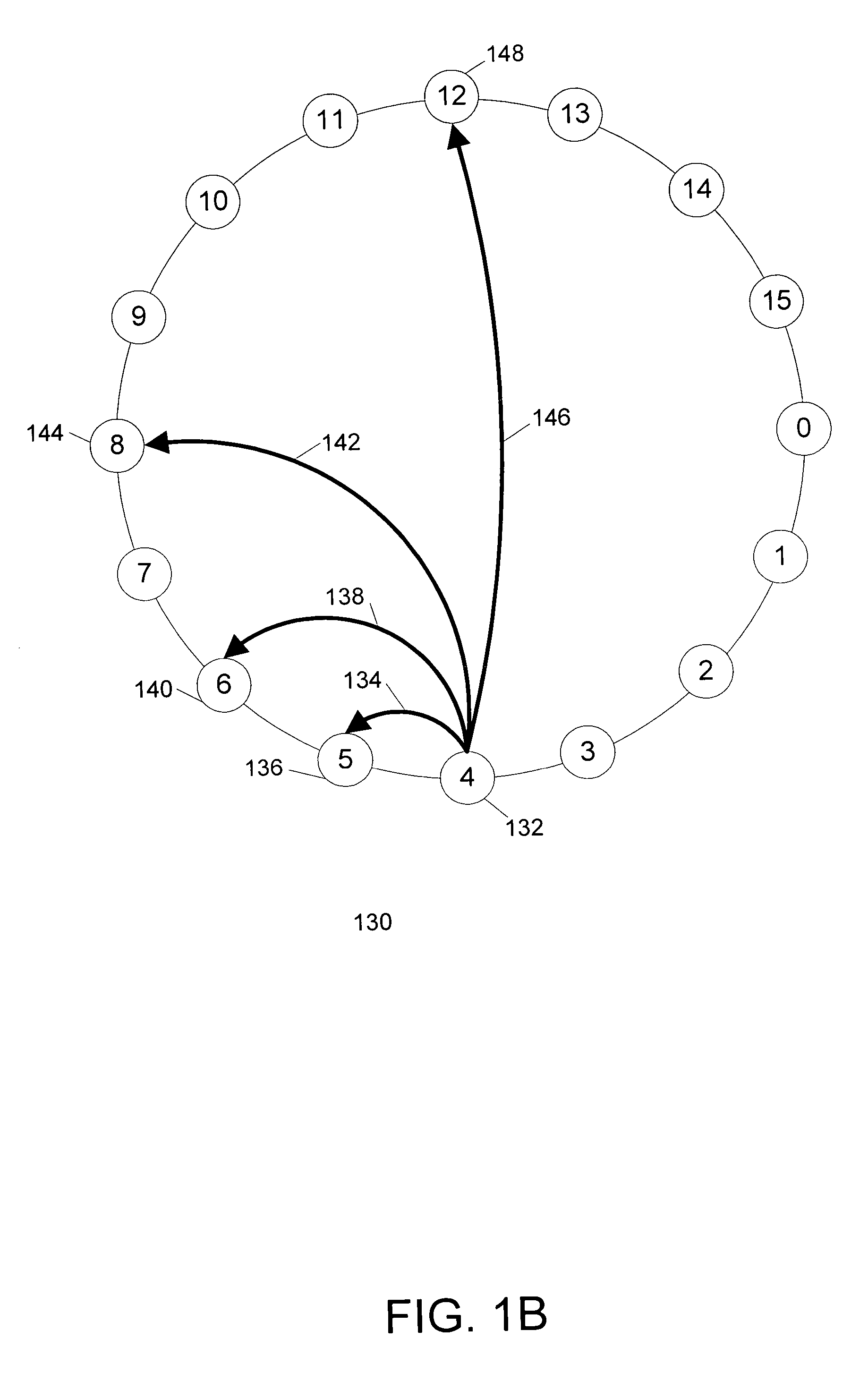Broadcast messaging in peer to peer overlay network
a peer-to-peer overlay network and broadcast message technology, applied in the field of data networks, can solve the problems of consuming a large amount of network bandwidth, inefficient implementation, and unable to efficiently distribute a single message to multiple destination nodes, and achieve the effect of efficient direct broadcast message and avoiding wasting network bandwidth
- Summary
- Abstract
- Description
- Claims
- Application Information
AI Technical Summary
Benefits of technology
Problems solved by technology
Method used
Image
Examples
Embodiment Construction
[0027]FIGS. 1A and 1B illustrate an example chord overlay network suitable for use with an embodiment of the invention. FIG. 1A illustrates an example chord overlay network 100 including numerous nodes, such as nodes 102, 104, 106, 108, 110, 112, 114, 116, 118, and 120. Each node is assigned one or more key values. For example, nodes 102, 104, 106, 108, 110, 112, 114, 116, 118, and 120 are assigned key values 0, 45, 60, 115, 120, 128, 144, 187, 210, and 240, respectively.
[0028]The nodes of the overlay network are arranged by their assigned key values in the hash space 125, or set of all possible key values. In FIG. 1A, the hash space 125 is shown as a ring configuration of all possible key values from 0 to 2n, with N being the number of bits allocated for a key value. In some implementations, N equals 160 bits, which is the size of the output of typical hash functions such as SHA-1 and is sufficiently large to avoid hash collisions. In this implementation, the chord overlay network ...
PUM
 Login to View More
Login to View More Abstract
Description
Claims
Application Information
 Login to View More
Login to View More - R&D
- Intellectual Property
- Life Sciences
- Materials
- Tech Scout
- Unparalleled Data Quality
- Higher Quality Content
- 60% Fewer Hallucinations
Browse by: Latest US Patents, China's latest patents, Technical Efficacy Thesaurus, Application Domain, Technology Topic, Popular Technical Reports.
© 2025 PatSnap. All rights reserved.Legal|Privacy policy|Modern Slavery Act Transparency Statement|Sitemap|About US| Contact US: help@patsnap.com



